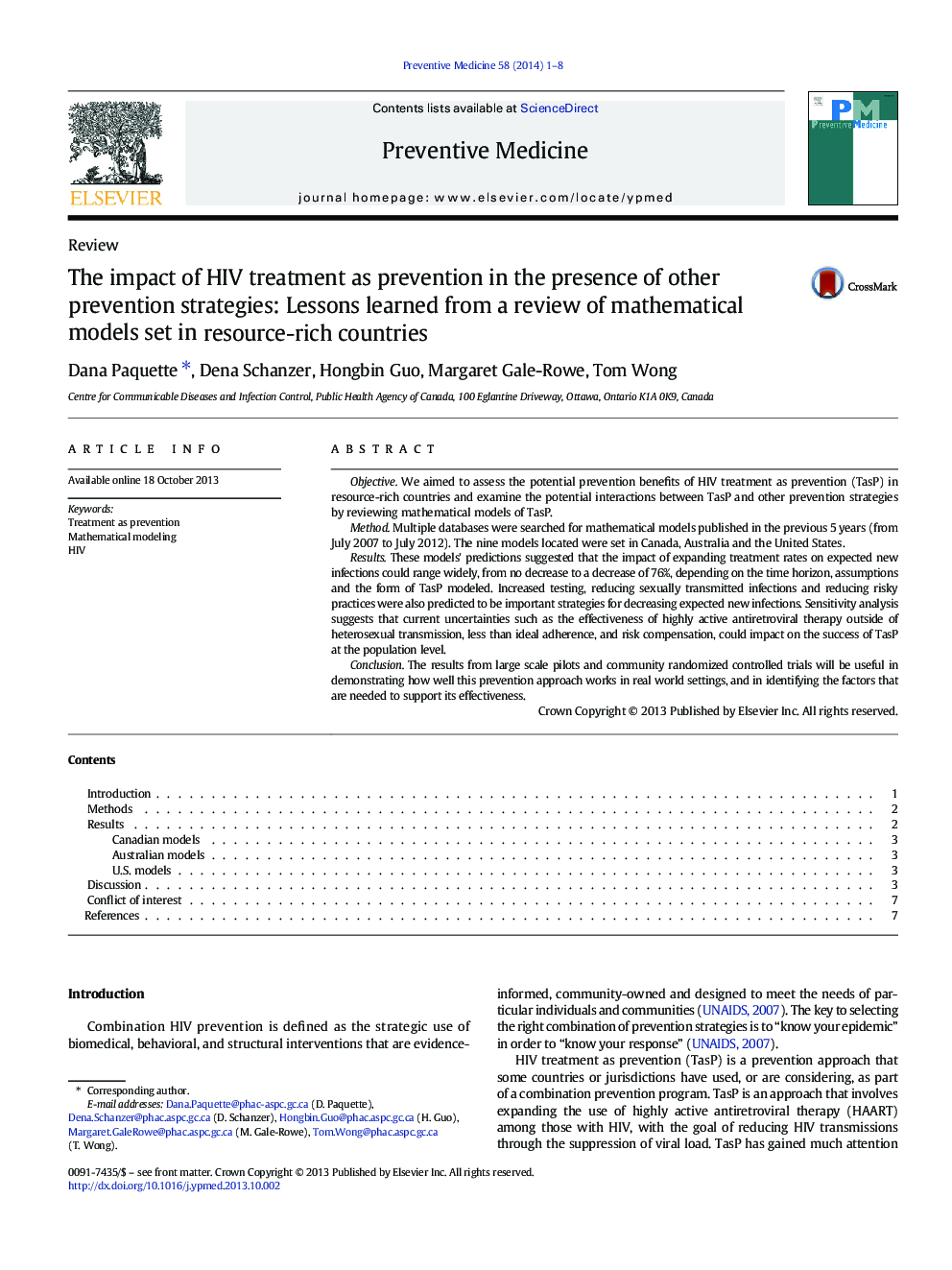| Article ID | Journal | Published Year | Pages | File Type |
|---|---|---|---|---|
| 6047594 | Preventive Medicine | 2014 | 8 Pages |
â¢We reviewed mathematical models of HIV TasP set in resource-rich countries.â¢Expanded HIV testing was important to the predicted success of a TasP approach.â¢Reducing risky behavior and improving HAART adherence were also important.â¢Community RCT results will be essential in determining TasP's effectiveness.
ObjectiveWe aimed to assess the potential prevention benefits of HIV treatment as prevention (TasP) in resource-rich countries and examine the potential interactions between TasP and other prevention strategies by reviewing mathematical models of TasP.MethodMultiple databases were searched for mathematical models published in the previous 5Â years (from July 2007 to July 2012). The nine models located were set in Canada, Australia and the United States.ResultsThese models' predictions suggested that the impact of expanding treatment rates on expected new infections could range widely, from no decrease to a decrease of 76%, depending on the time horizon, assumptions and the form of TasP modeled. Increased testing, reducing sexually transmitted infections and reducing risky practices were also predicted to be important strategies for decreasing expected new infections. Sensitivity analysis suggests that current uncertainties such as the effectiveness of highly active antiretroviral therapy outside of heterosexual transmission, less than ideal adherence, and risk compensation, could impact on the success of TasP at the population level.ConclusionThe results from large scale pilots and community randomized controlled trials will be useful in demonstrating how well this prevention approach works in real world settings, and in identifying the factors that are needed to support its effectiveness.
